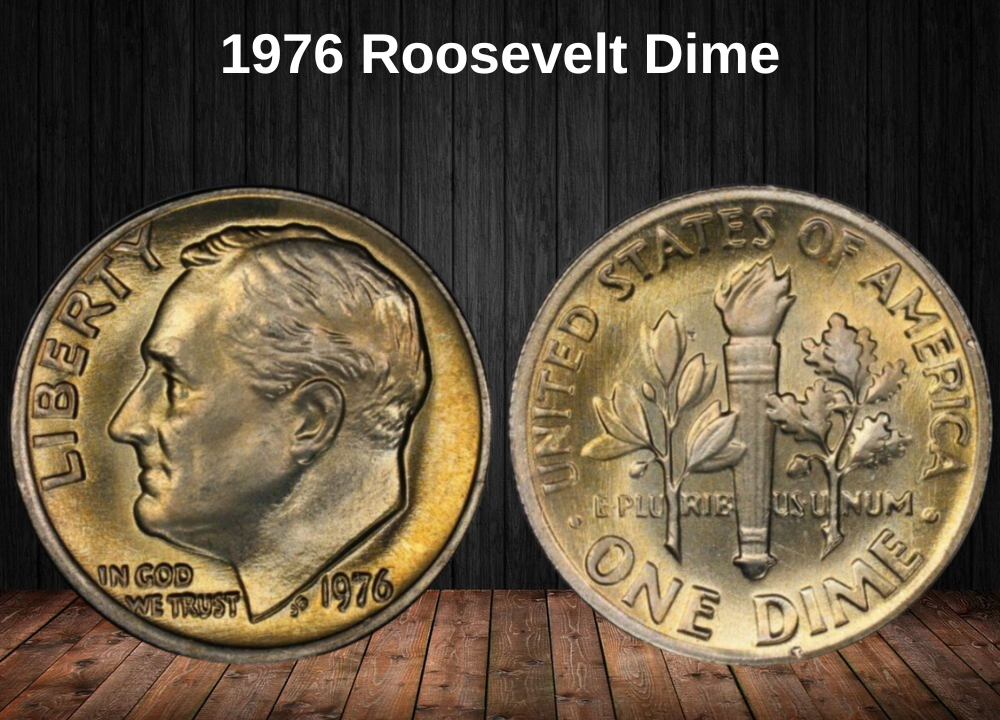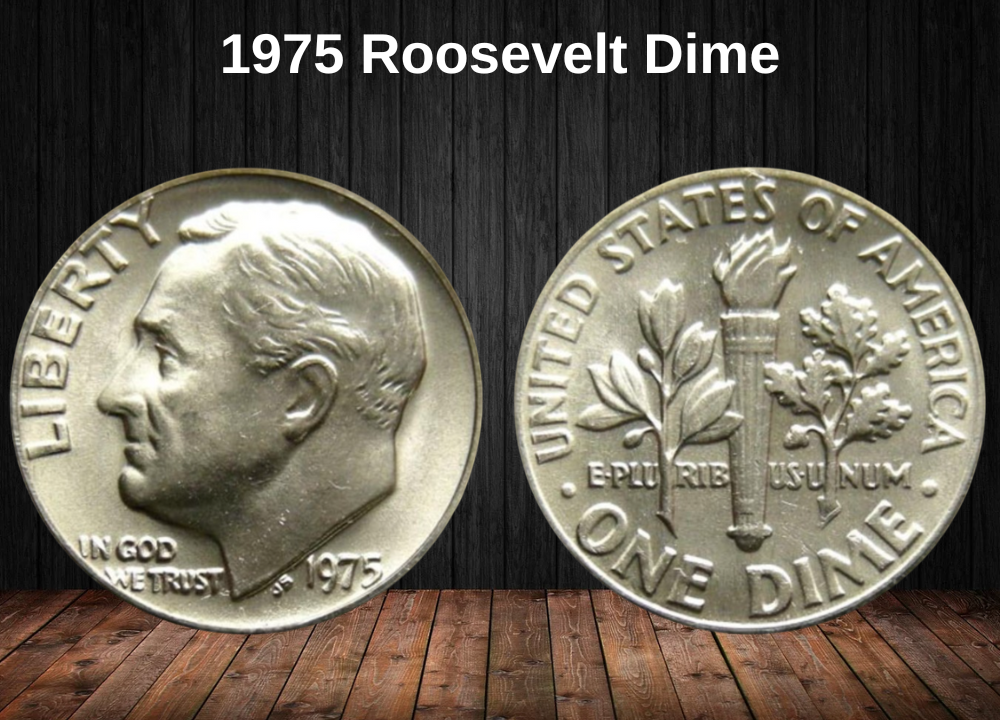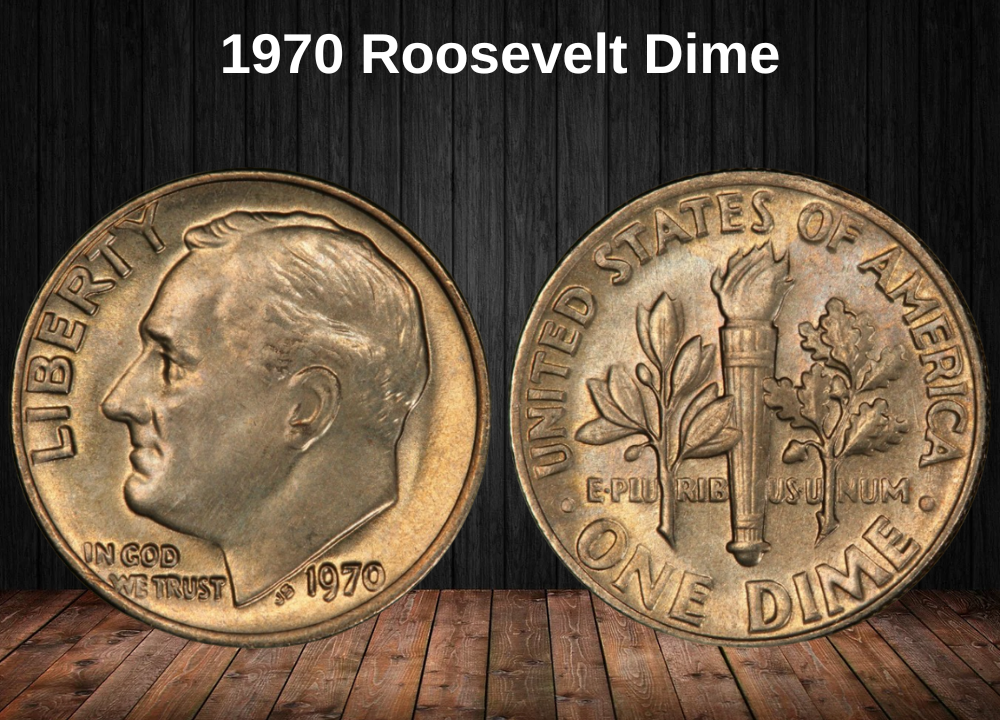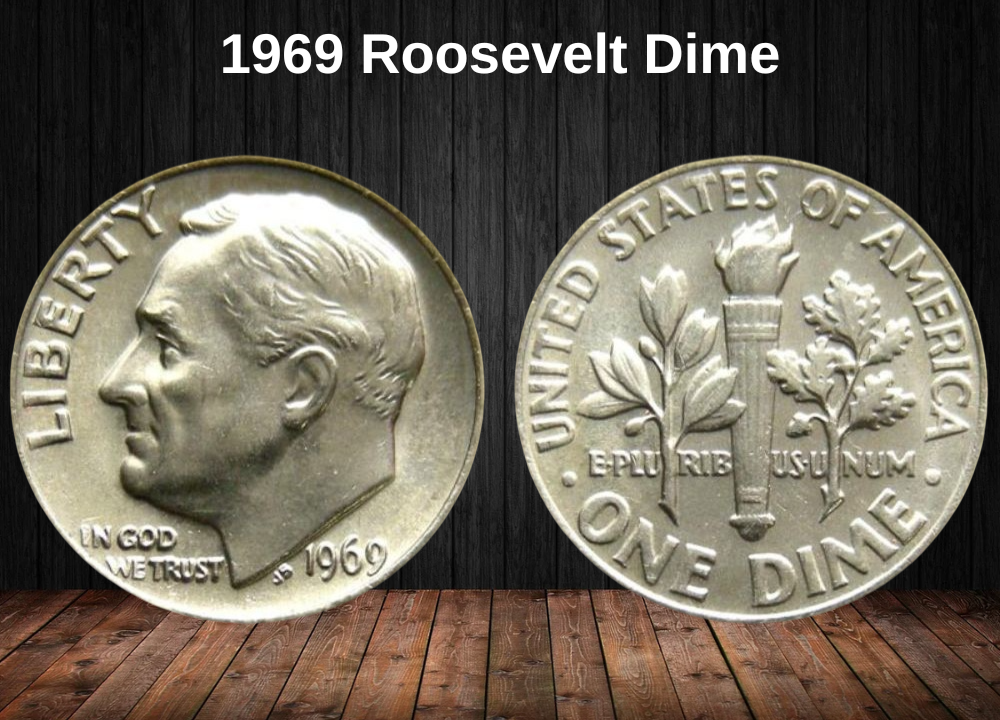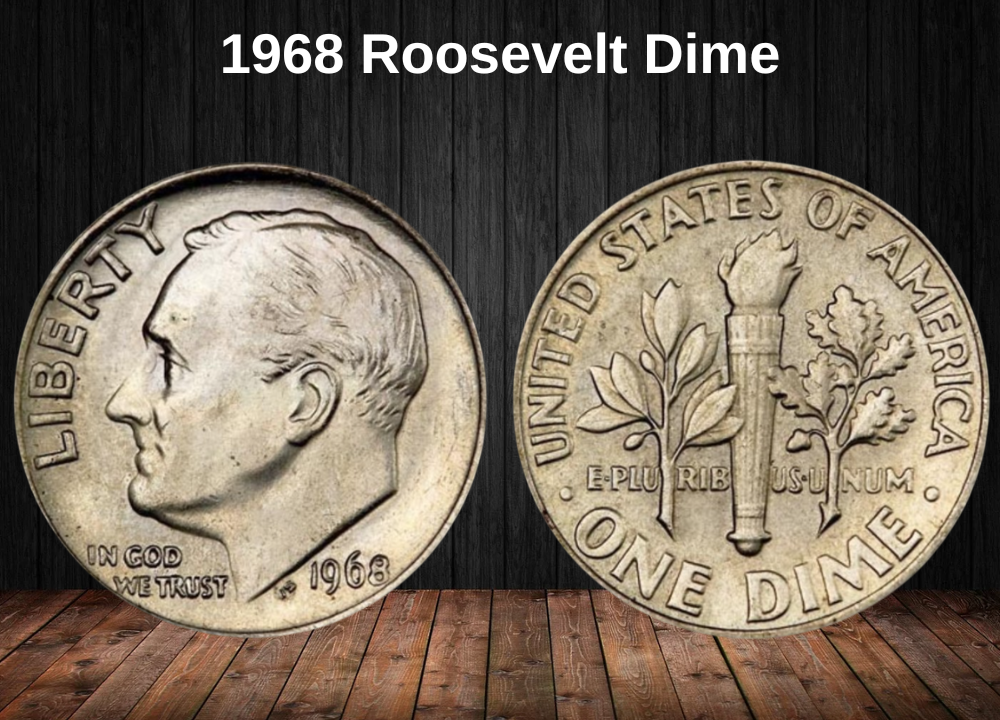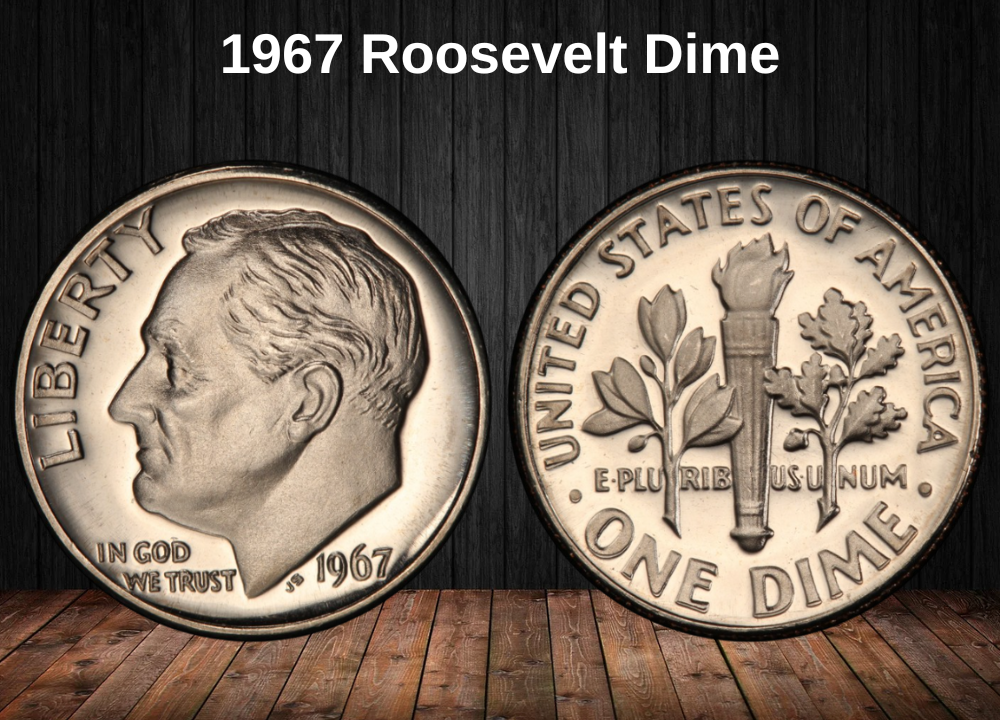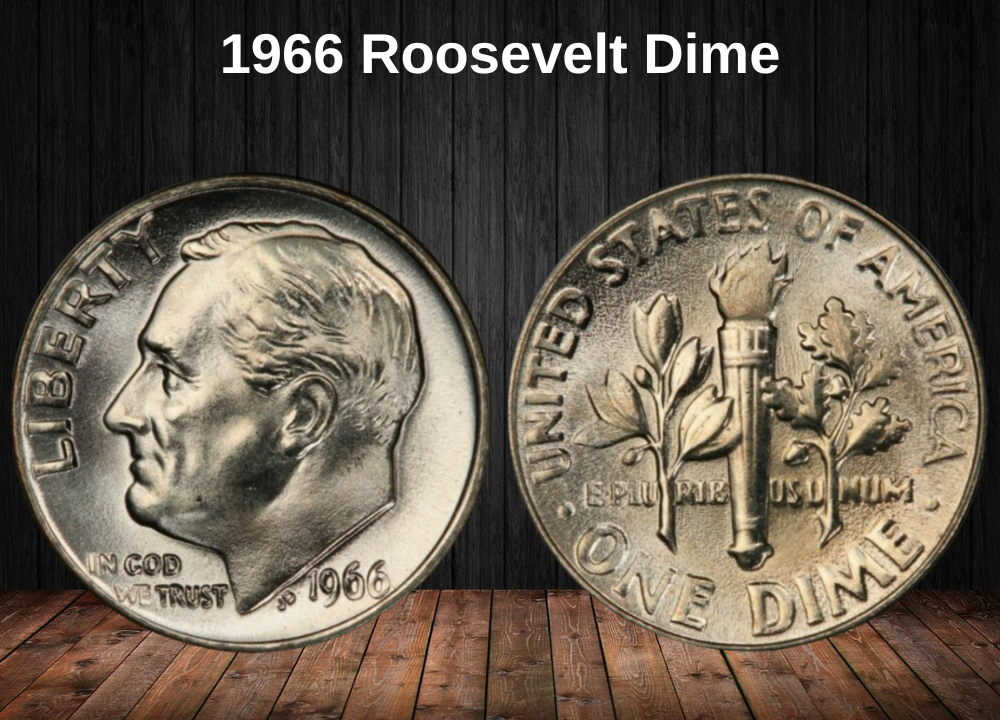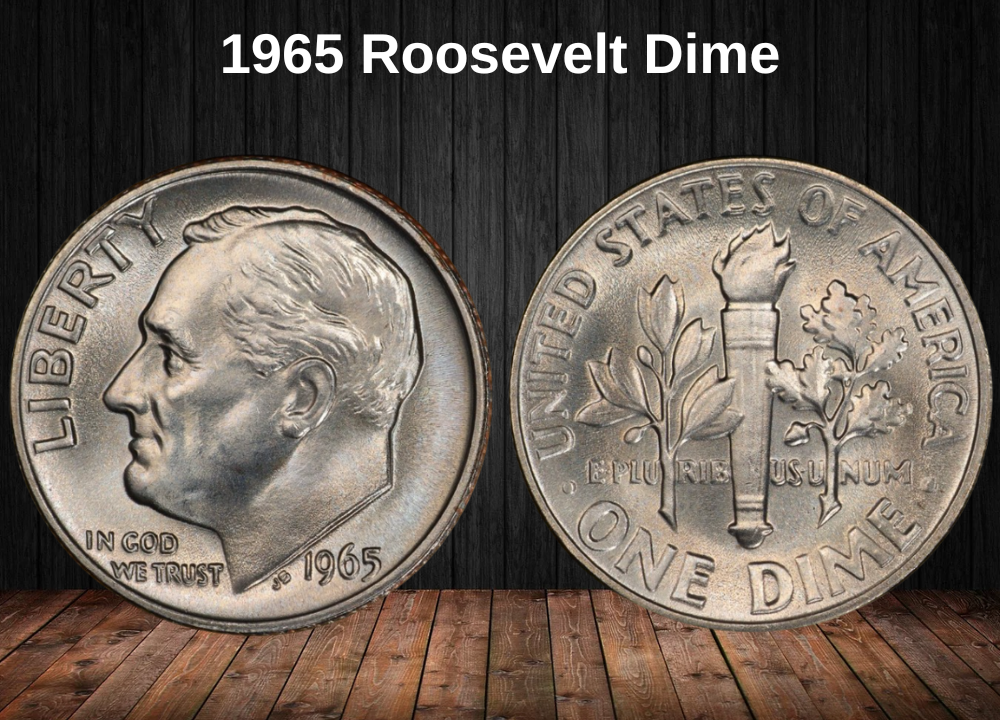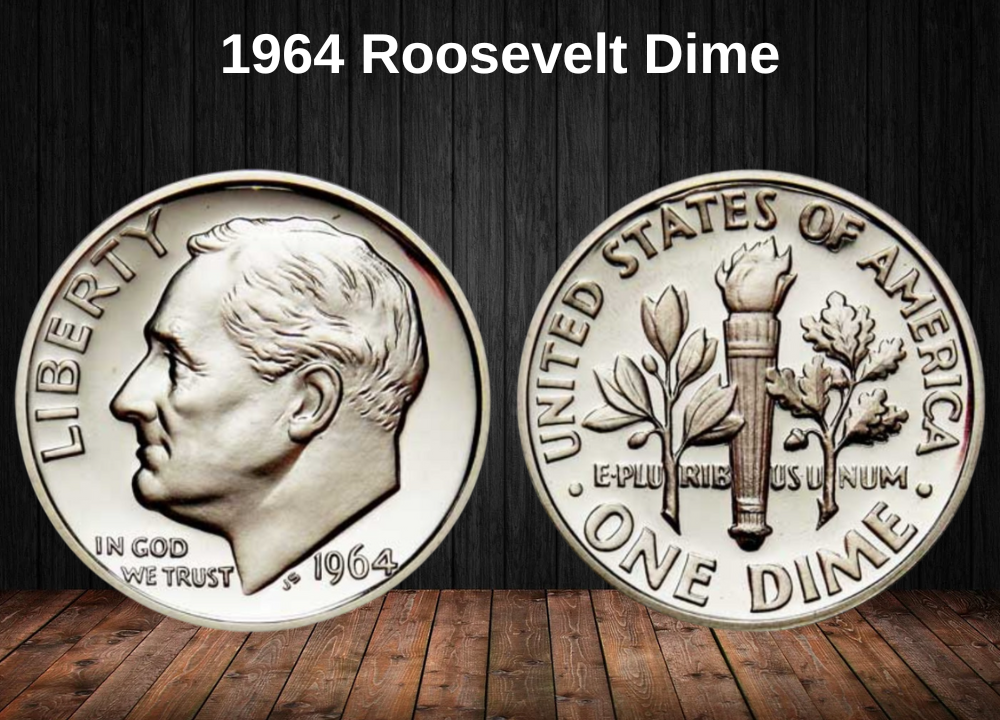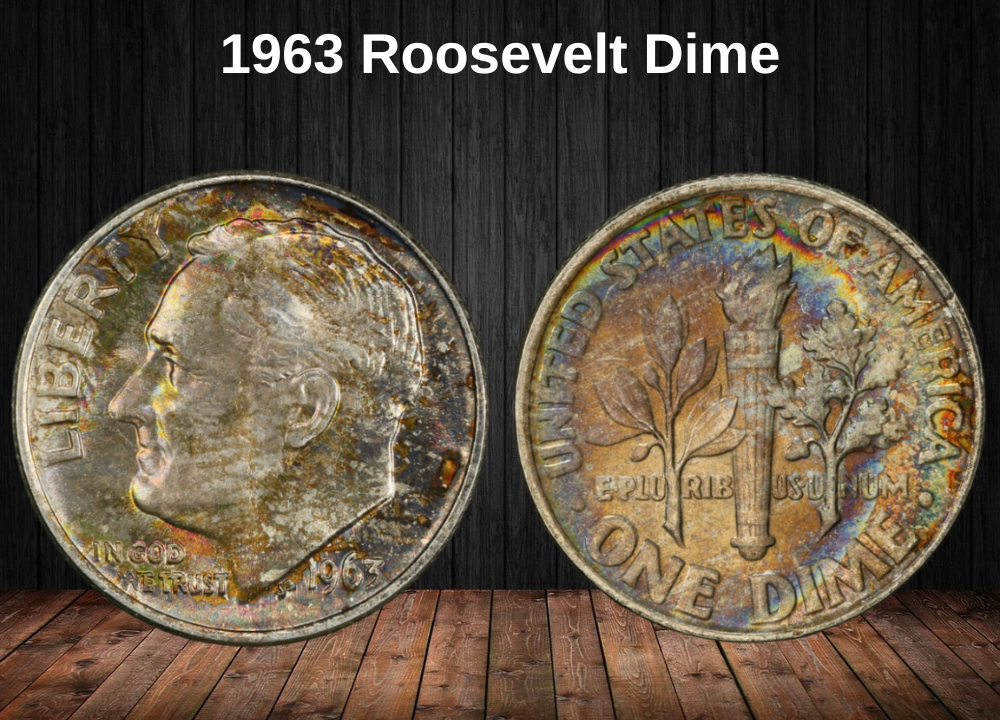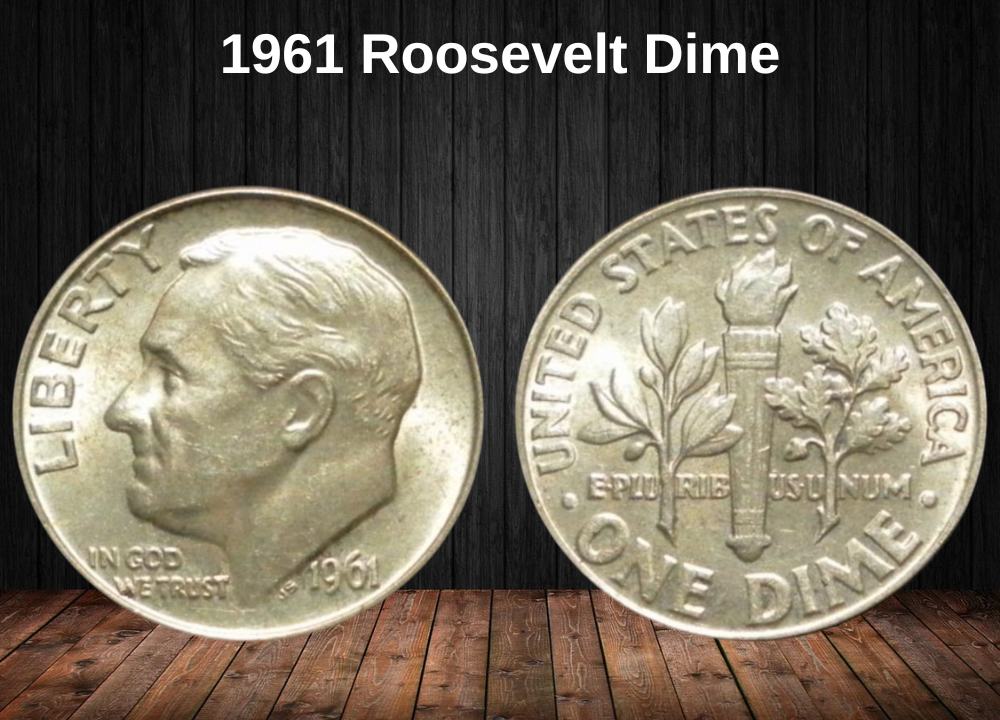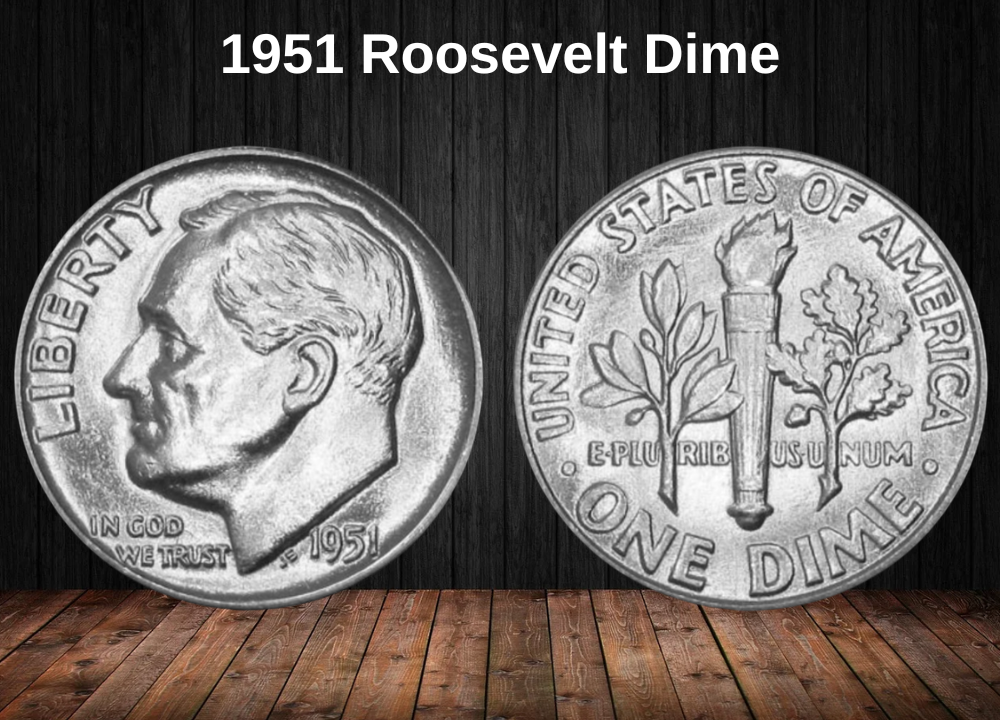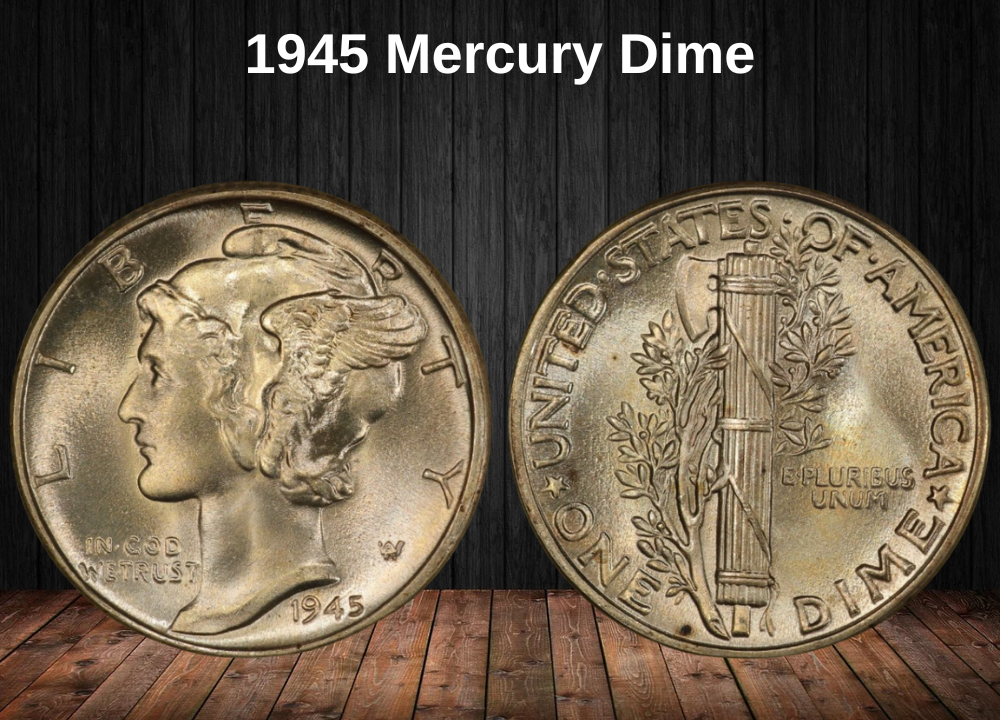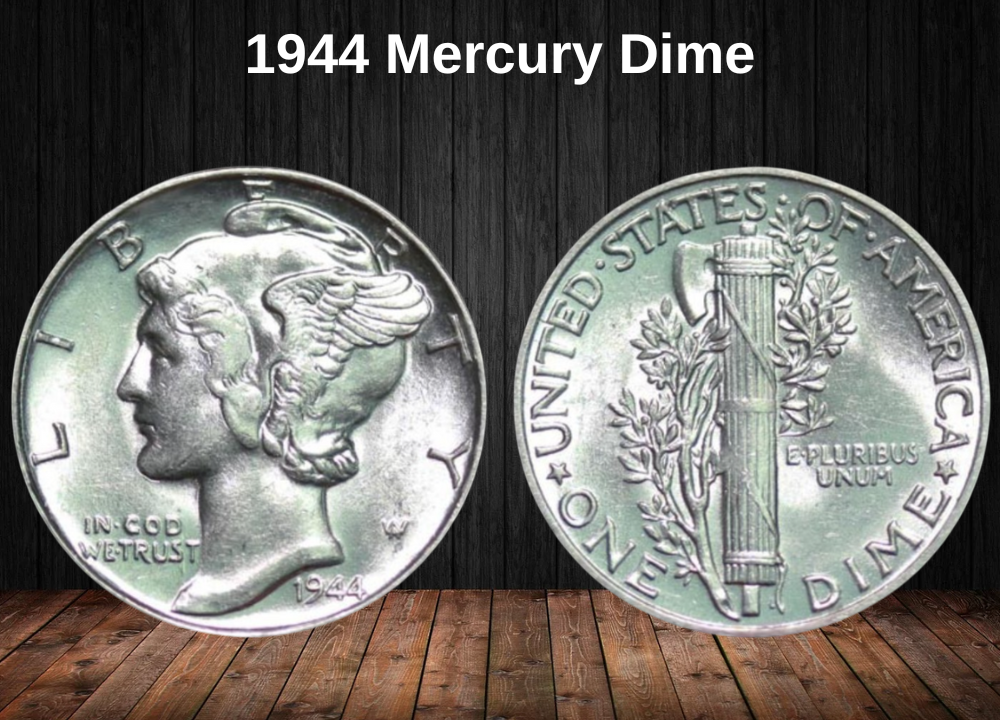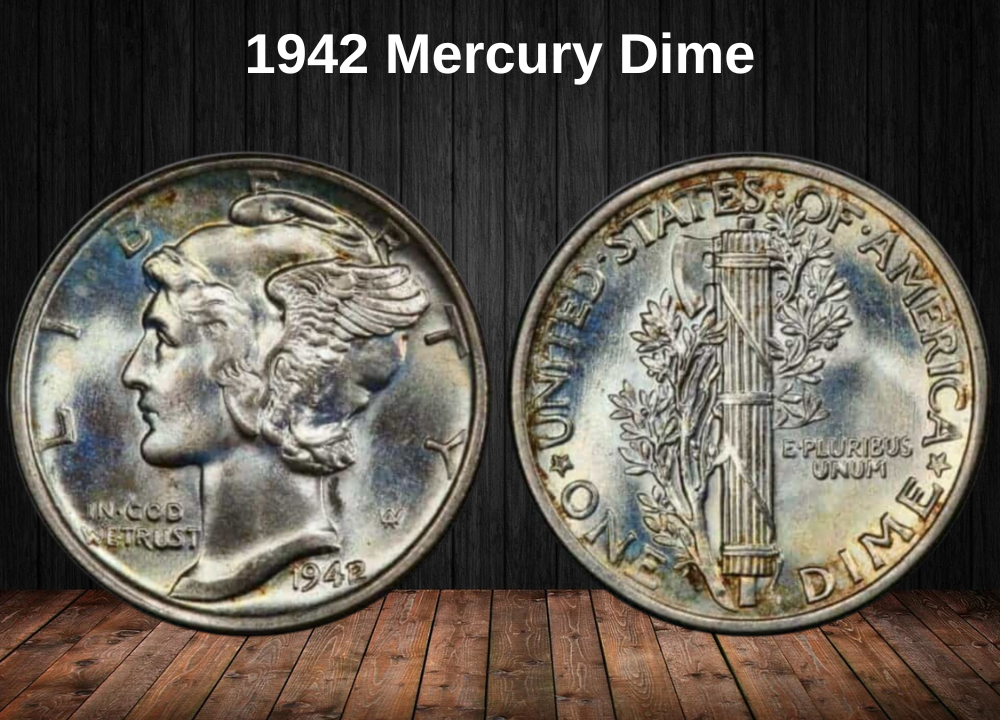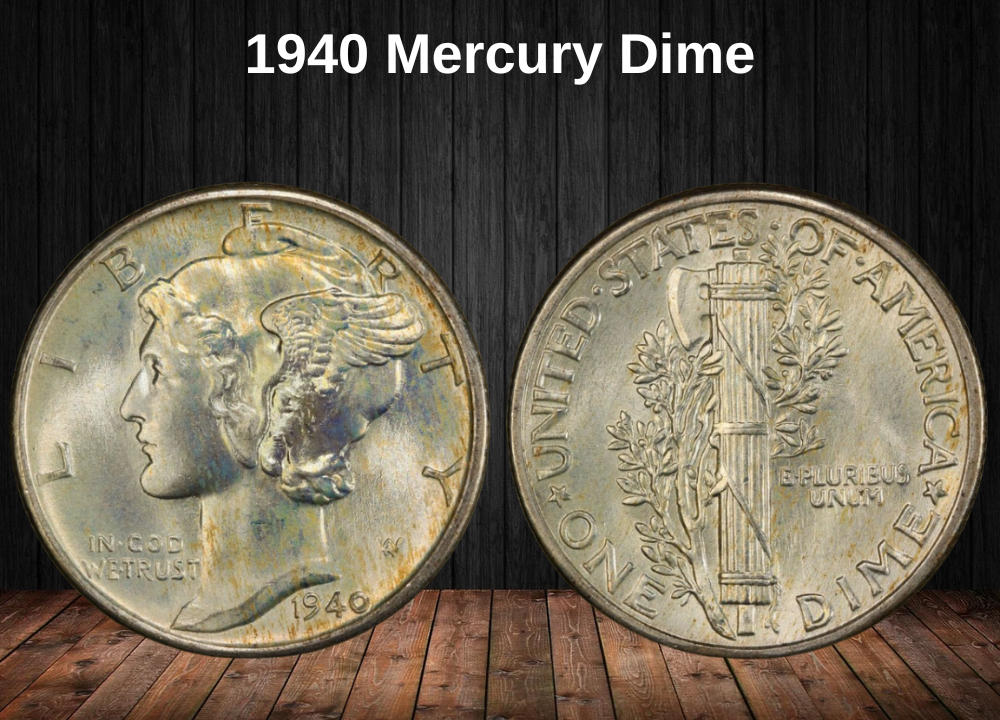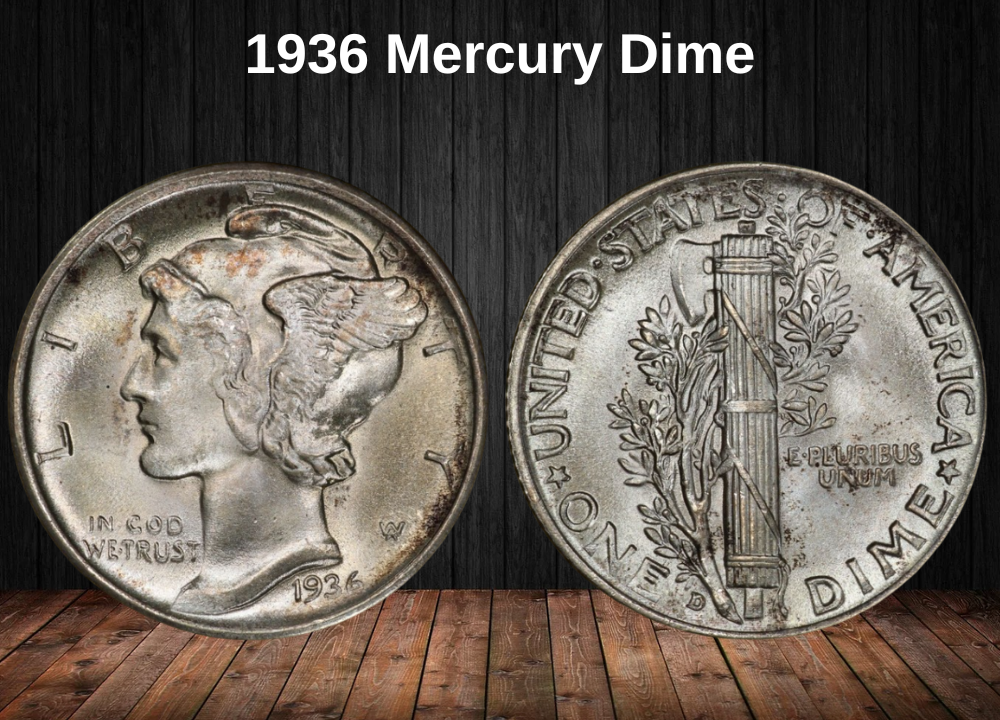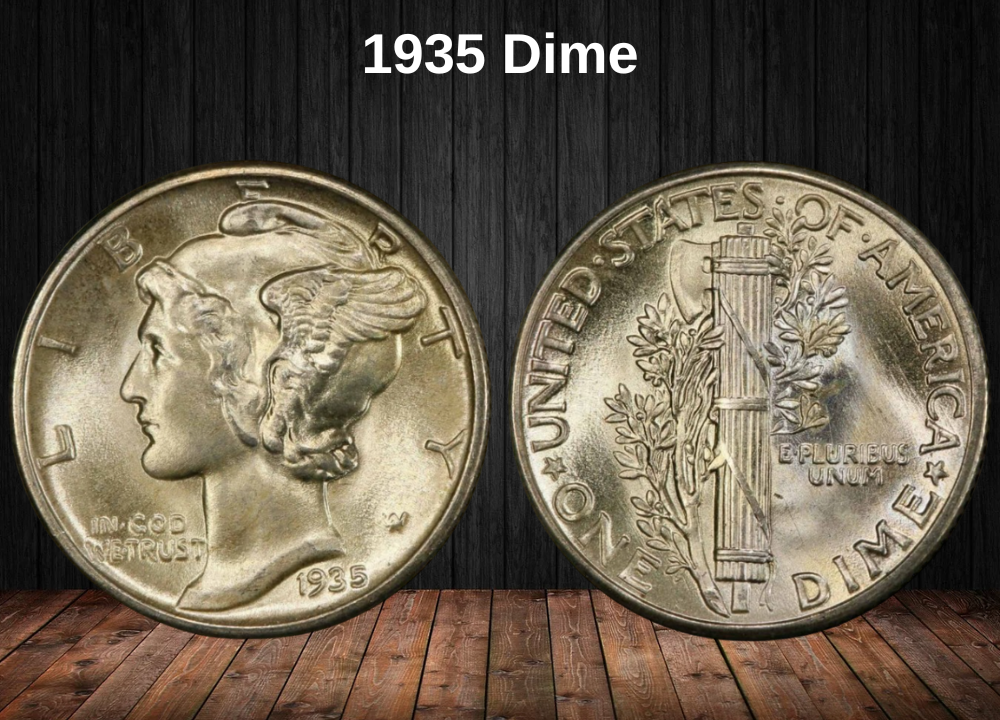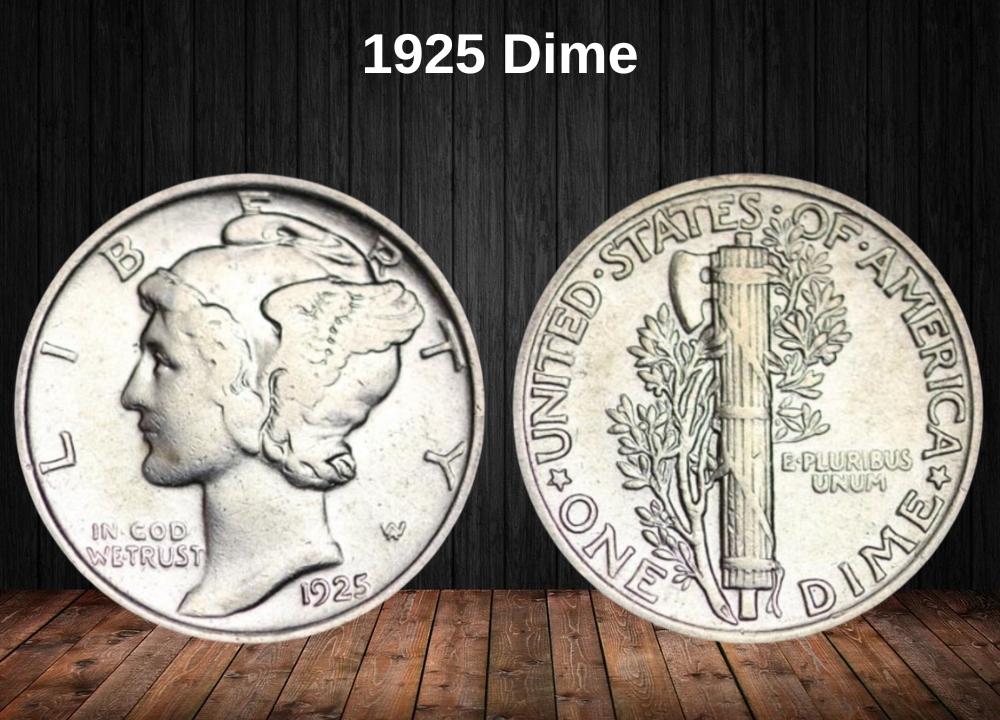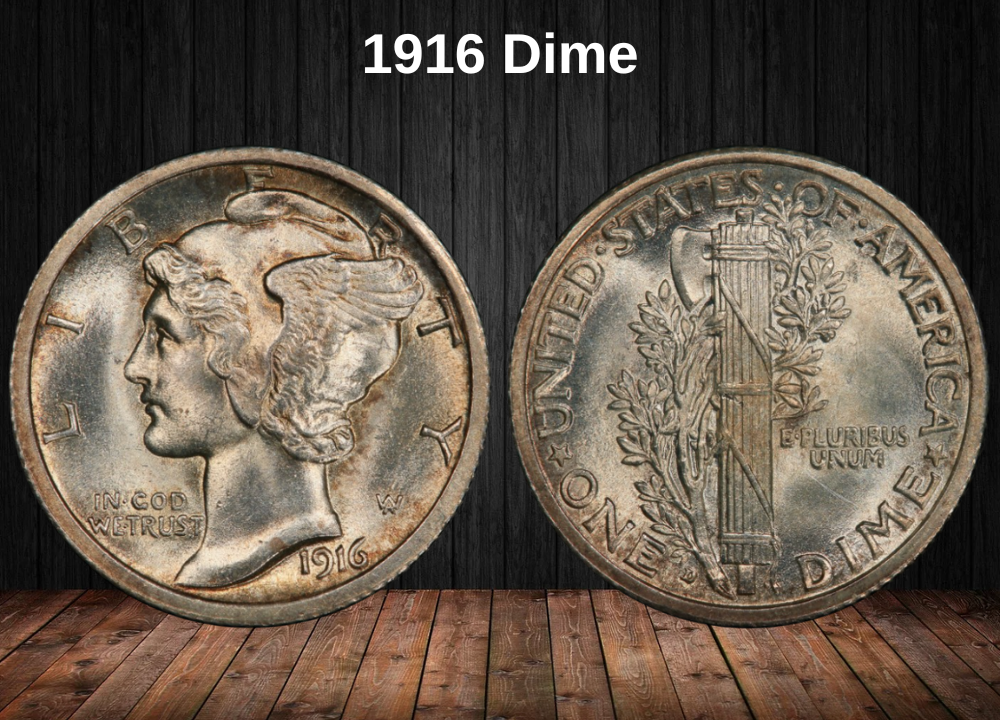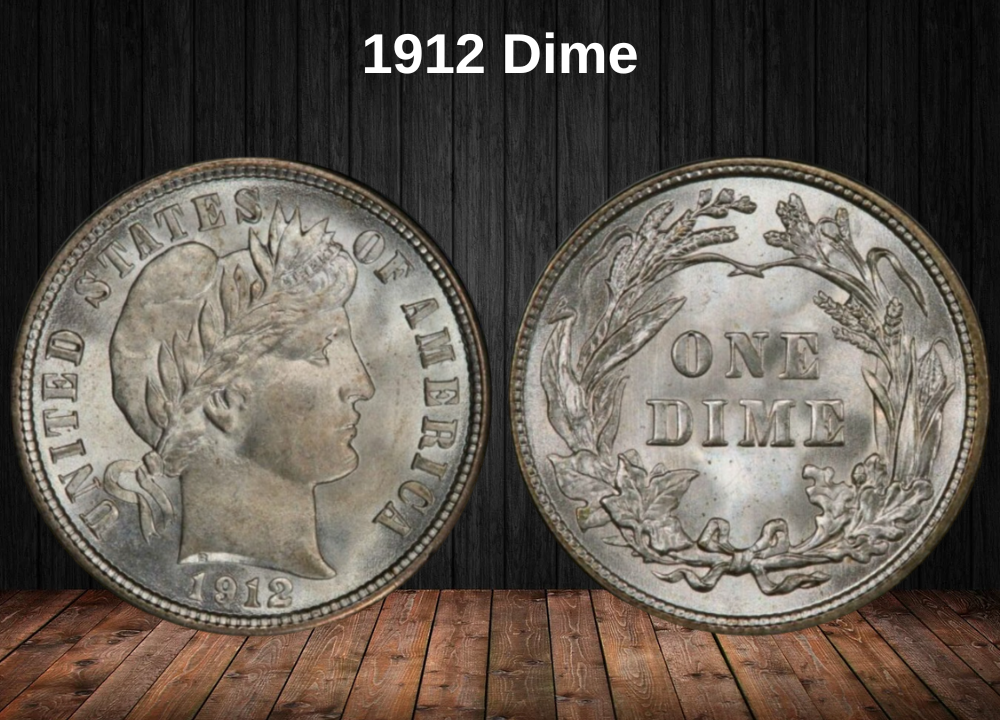Have you ever wondered how much that old 1924 dime from your grandfather’s collection might be worth? You may be holding far more than just a 10-cent coin—you could have a piece of history that sells for hundreds or even thousands of dollars today.
While some 1924 dimes are only valued at face value, others—depending on condition, rarity, and mint errors—have fetched impressive sums at auctions.
So, what exactly makes the 1924 Mercury dime valuable? Let’s take a closer look.
1924 Dime Value Chart
| Mint Mark | Good | Fine | Extremely Fine | Uncirculated |
|---|---|---|---|---|
| 1924 (No Mint Mark) | $7 | $11 | $20 | $70 – $1,650 |
| 1924 “D” Dime | $9 | $30 | $80 | $325 – $5,000 |
| 1924 “S” Dime | $8 | $18 | $70 | $450 – $11,000 |
History of the 1924 Dime

By 1924, the Mercury dime had already been in circulation for nearly a decade and was one of the most admired U.S. coin designs of its time. Sculpted by Adolph A. Weinman, the Winged Liberty Head dime symbolized freedom of thought, with Lady Liberty wearing a winged Phrygian cap.
The 1920s brought economic growth after World War I, and coinage demand remained high. In 1924, Mercury dimes were minted in three locations—Philadelphia, Denver, and San Francisco. Each mint produced millions of pieces, but the quality of strikes varied. Coins from Denver and San Francisco were often weaker in detail, making well-struck examples from these mints particularly desirable today.
While not considered the rarest date in the series, the 1924 dimes hold historical value as part of America’s Roaring Twenties coinage. Collectors especially prize coins in high grades with the Full Bands designation, where the bands on the fasces on the reverse are fully separated—proof of a sharp and precise strike.
Features of the 1924 Mercury Dime
The 1924 Mercury Dime, officially called the Winged Liberty Head Dime, was designed by Adolph A. Weinman, one of the most prominent sculptors of early 20th-century U.S. coinage. Introduced in 1916 as a replacement for the Barber Dime, the Mercury Dime remained in circulation until 1945 and is today considered a classic piece of American numismatic art.
Obverse of the 1924 Mercury Dime
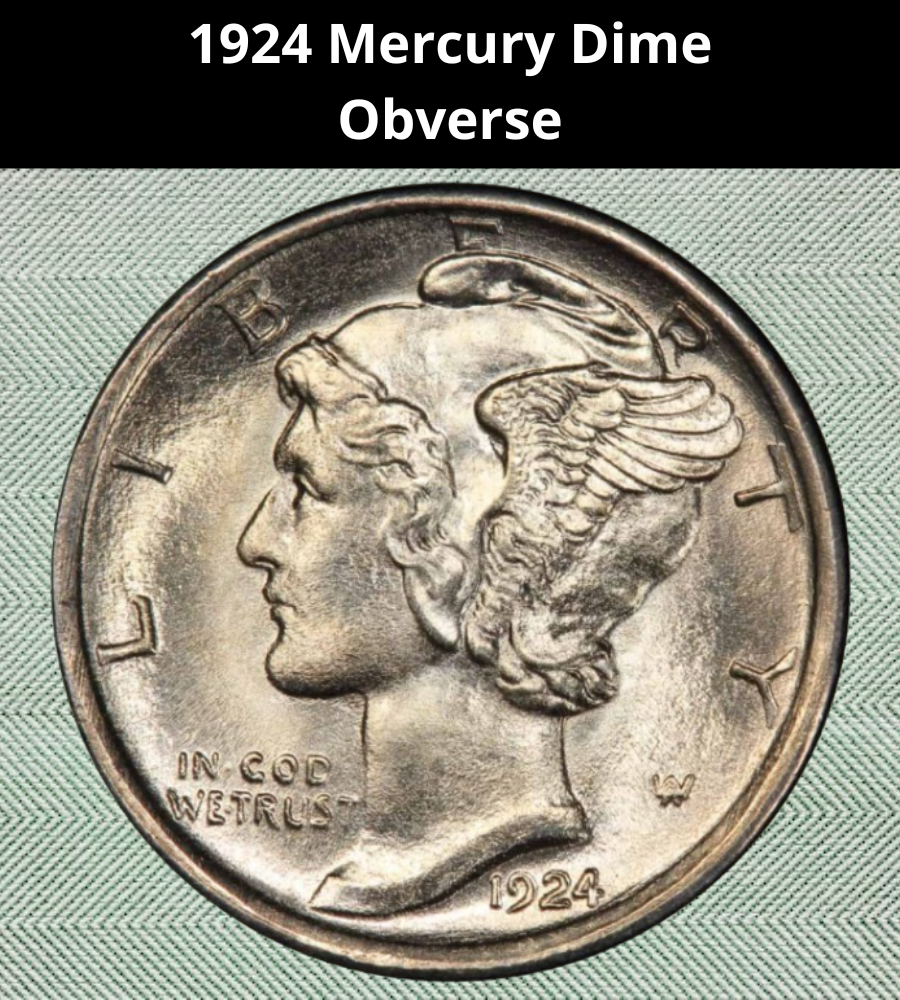
The obverse features Lady Liberty facing left, wearing a winged Phrygian cap, a powerful emblem of freedom of thought. Because of the winged cap, collectors nicknamed the coin the “Mercury Dime,” as Liberty’s appearance resembled the Roman god Mercury.
The inscriptions on the obverse are:
- LIBERTY around the upper rim
- IN GOD WE TRUST to the left of Liberty’s neck
- The date 1924 at the lower right
- The designer’s initials “AW” to the right of Liberty’s neck
Reverse of the 1924 Mercury Dime
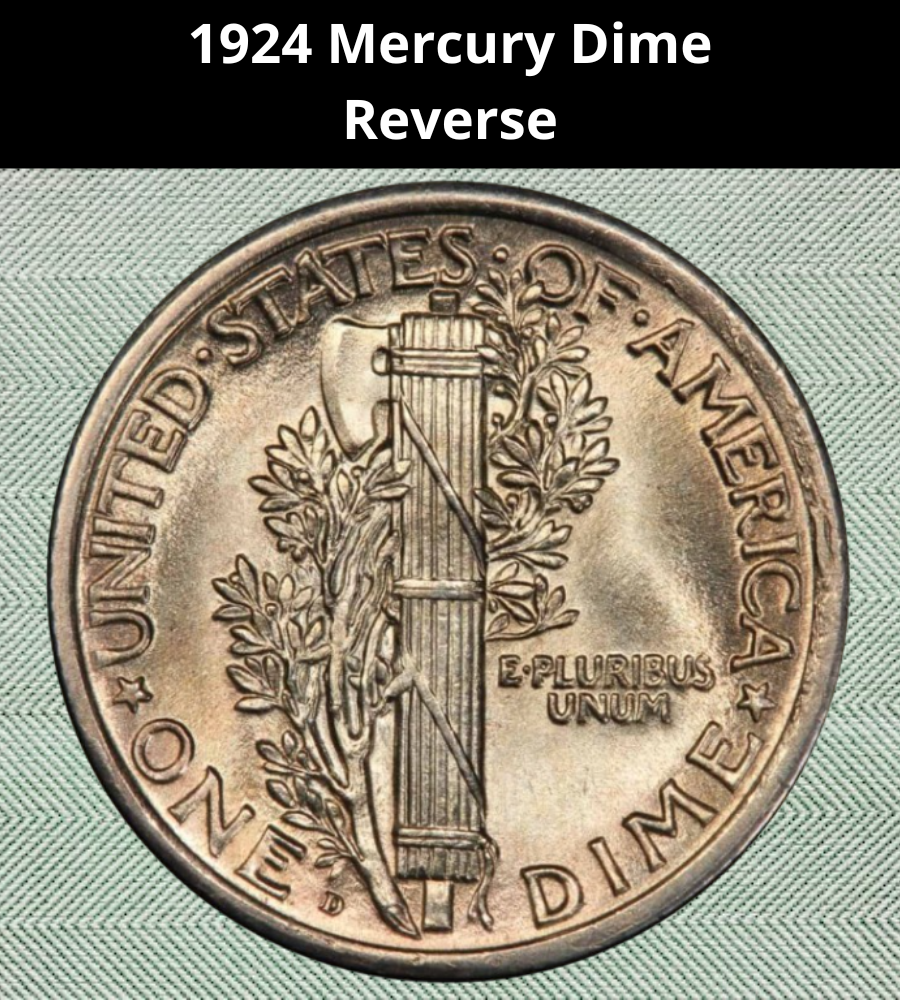
The reverse depicts a fasces, a bundle of rods tied with leather straps, symbolizing unity and strength, paired with an olive branch, representing peace. This dual imagery reflected America’s post–World War I aspirations for both resilience and harmony.
The inscriptions on the reverse include:
- UNITED STATES OF AMERICA around the upper rim
- E PLURIBUS UNUM to the right of the fasces
- ONE DIME at the bottom
- The mint mark (D for Denver, S for San Francisco, or blank for Philadelphia) is found to the right of the “E” in “ONE.”
1924 Mercury Dime Specifications
- Face Value: $0.10 (ten cents)
- Shape: Round
- Composition: 90% silver, 10% copper
- Type: Standard circulation coin
- Diameter: 17.91 mm (0.705 in)
- Weight: 2.50 g (0.08038 troy oz)
- Silver Weight: 2.25 g (0.07234 troy oz)
- Minting Technique: Milled
- Thickness: 1.35 mm (0.053 in)
- Edge: Reeded
The 1924 Mercury Dime combines symbolic artistry with a high silver content, making it a treasured collectible. Well-struck examples, especially those with Full Bands on the fasces, are among the most desirable for collectors today.
1924 Dime Grading
The 1924 Mercury Dime is evaluated using the Sheldon Scale, a universal system ranging from 1 to 70. Coins at the lowest levels (1–3) are heavily worn and barely identifiable, while a perfect grade of 70 represents a flawless, mint-state example with full luster and no visible imperfections under magnification.
Collectors typically categorize the 1924 dime into several condition tiers: Good, Very Good, Fine, Very Fine, Extremely Fine, About Uncirculated, and Uncirculated (Mint State). The grade has a direct impact on the coin’s value, with higher-grade coins—especially those with Full Bands on the reverse—being exponentially more desirable.
To determine if you own a high-grade 1924 dime, examine these key areas:
- Obverse: Look at Liberty’s hair, cap wings, and cheek. In Mint State coins, these details remain sharp and well-defined.
- Reverse: Focus on the fasces bands. Full, unbroken center bands are the hallmark of a premium strike.
- Overall Luster: Uncirculated coins should display a bright, original mint shine with no signs of wear.
Here is a simplified breakdown of grades for the 1924 dime:
| # | Grade | Description |
|---|---|---|
| 1 | Basal State-1 | Barely identifiable, extreme wear |
| 2 | Fair | Major details missing |
| 3 | Very Fair | Slightly clearer but still poor condition |
| 4–6 | Good | Outlines visible, heavy wear |
| 7–10 | Very Good | Some details survive, still worn |
| 12–15 | Fine | Moderate wear, major design elements visible |
| 20–30 | Very Fine | More detail, moderate circulation |
| 40 | Extremely Fine | Light wear, strong definition |
| 50 | About Uncirculated | Minimal wear, nearly mint |
| 60 | Mint State (MS60) | Uncirculated, noticeable marks |
| 65 | Mint State (MS65) | High-quality strike, few marks |
| 70 | Mint State (MS70) | Perfect, flawless coin |
Proper grading is the most critical step in determining the real market value of a 1924 Mercury Dime. Even a small jump in grade can mean the difference between a coin worth a few hundred dollars and one worth thousands.
1924 Dime Value Guides
1924 No Mint Mark Dime Value
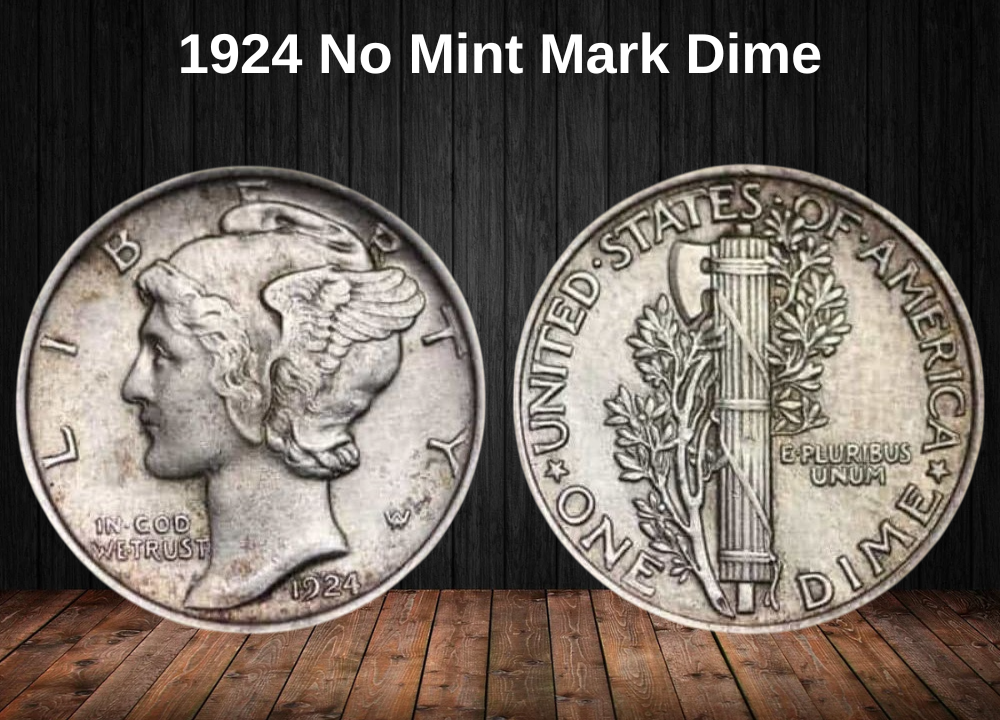
The 1924 Mercury Dime without a mint mark was struck at the Philadelphia Mint, with a total mintage of 24,010,000 coins. While this makes it the most common of the three varieties issued that year, collectors still prize it in higher grades.
The obverse features Lady Liberty with a winged cap, symbolizing freedom of thought, while the reverse displays a fasces for strength and unity, paired with an olive branch for peace. Designed by Adolph A. Weinman, the coin remains one of the most admired pieces of American coinage.
Despite its relatively high mintage, uncirculated specimens are scarce and can bring strong premiums. In lower grades, values range from $7 (Good) to about $20 (Extremely Fine). In Mint State, the 1924 no mint mark dime can reach up to $1,650, with exceptional coins selling for even more.
A famous auction example occurred in 1997, when a 1924 MS-65 no mint mark dime realized $3,850 at a David Akers sale.
1924 “D” Dime Value
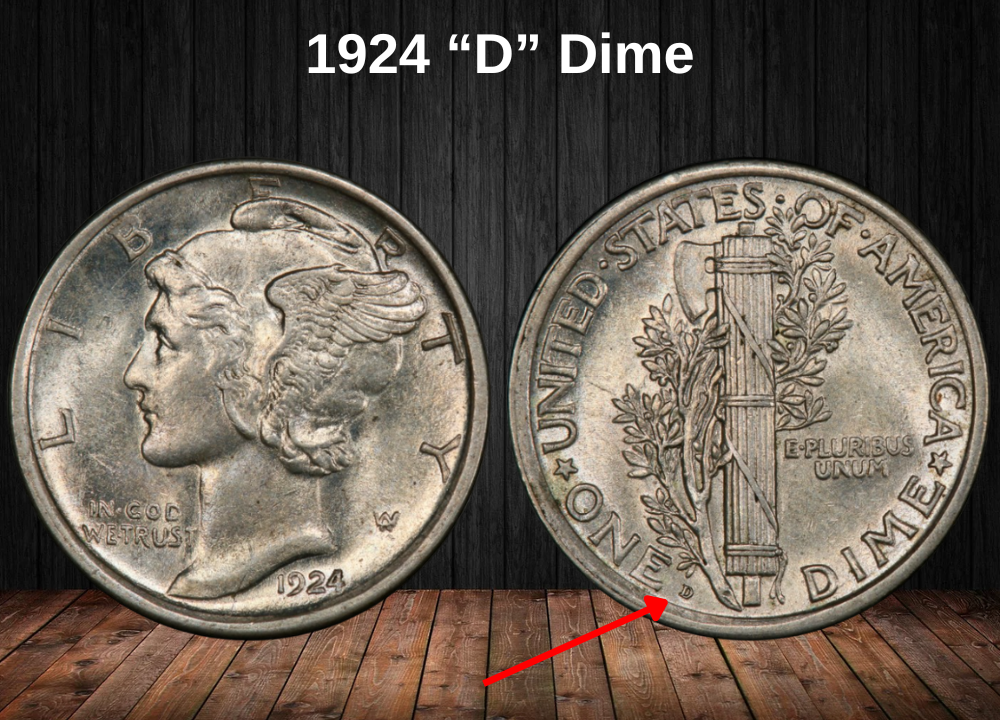
The 1924-D Mercury Dime, struck at the Denver Mint, is significantly scarcer than the Philadelphia issue. With only 6,810,000 coins produced, it had the lowest mintage of the year.
Production at the Denver Mint was interrupted by a temporary labor strike, which contributed to the limited output. This, combined with attrition during the Great Depression, makes the 1924-D a key semi-key date in the series—often listed alongside the 1916-D, 1921, and 1931-S dimes as must-have rarities.
Values start around $9 in Good condition and climb to $80 in Extremely Fine. In Mint State, prices often exceed $2,000, with top-graded coins breaking auction records. For example, in 2010, Heritage Auctions sold a 1924-D Mercury Dime graded MS-67 for an impressive $9,200.
1924 “S” Dime Value
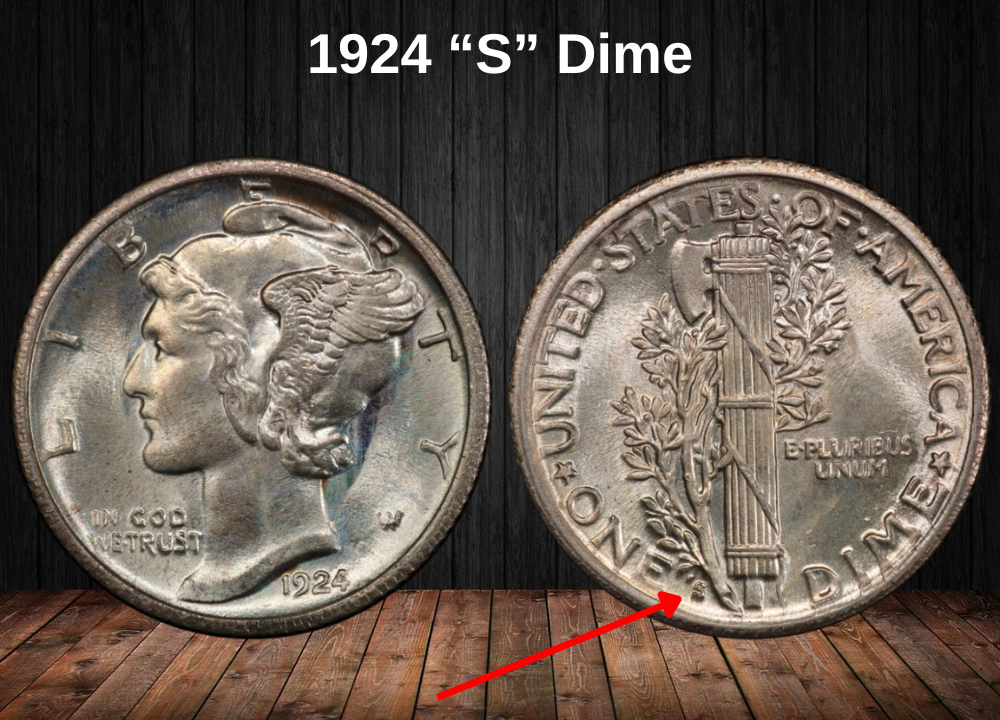
The 1924-S Mercury Dime, minted in San Francisco, had a total mintage of 7,120,000 coins—only slightly higher than the Denver issue. Despite this, it is still considered a challenging coin to locate in higher grades.
Like all Mercury Dimes, its obverse shows Liberty with a winged cap, while the reverse displays the fasces and olive branch. Weighing 2.5 grams and composed of 90% silver, the coin reflects both artistry and value.
Circulated examples are relatively affordable, bringing $8 to $18 in Fine to Very Fine condition. In Extremely Fine, values jump to around $70, and in Uncirculated grades, prices can exceed $450.
One of the most notable sales was in 2003, when a 1924-S Mercury Dime graded MS-67 realized $6,900 at auction.
Interestingly, conspiracy theories have circulated regarding the fasces on the reverse, with some suggesting hidden messages tied to political events like the JFK assassination. However, professional numismatists firmly dismiss these claims as coincidence.
Rare 1924 Dime Error List
1924 Dime Clipped Planchet Error
One of the most collectible error varieties from 1924 is the Clipped Planchet Error. This occurs when the blank metal disc (planchet) was improperly cut before striking, leaving a noticeable portion of the coin missing.
Clips can vary in size, from small slivers to nearly half of the coin’s diameter. On the 1924 Mercury Dime, they are often found near the bottom reverse, just below the word “ONE”.
Collectors prize these coins because of their rarity and dramatic appearance. Values depend heavily on the size and visibility of the clip as well as the coin’s overall grade. Larger or more prominent clips command higher premiums, especially when paired with well-preserved details.
1924 Dime Die Crack Error
Another fascinating mint error for the 1924 Mercury Dime is the Die Crack Error. This happens when the coin dies themselves develop cracks, which then transfer raised lines or fissures onto the struck coin.
Die cracks can form anywhere on the coin’s surface, from subtle hairline fractures to dramatic patterns that cut across major design elements. Some collectors especially enjoy dramatic cracks that resemble lightning bolts or extend through Liberty’s portrait.
The value of a 1924 dime with a die crack depends on the length, location, and distinctiveness of the fracture. Coins with bold, unusual, or eye-catching cracks are typically the most desirable.
Where to Sell Your Dime Coin?
Now that you know the value of your dime, the next step is deciding where to sell it. There are several trusted options—both online and in person—that can help you get the best price depending on your coin’s rarity and condition.
To see the full list of recommended places, along with their advantages and disadvantages, check our complete guide on where to sell your dime coins.
1924 Dime FAQs
How rare is the 1924 Dime compared to other Mercury Dimes?
The 1924 Dime is considered scarce but not the rarest of the Mercury dime series. The 1924-D from Denver is among the harder-to-find issues because of its low mintage (6,810,000 coins) and heavy circulation during the Great Depression. While not as rare as the 1916-D or 1921 issues, the 1924-D is still a key date for collectors seeking a complete Mercury dime set.
Why are high-grade 1924 Dimes so valuable?
Most 1924 dimes entered circulation immediately and saw heavy use, which means they are usually found with worn details. Finding an uncirculated or Mint State example is very difficult today. The scarcity of well-preserved coins explains why high-grade specimens can reach thousands of dollars at auction.
What role did the silver content play in the survival of 1924 Dimes?
The 1924 dime is composed of 90% silver and 10% copper. During the Great Depression and later silver booms, many Mercury dimes were melted down for their bullion value. This reduced the surviving population of original coins, making authentic 1924 dimes even scarcer, especially in pristine condition.
Are there known counterfeits of the 1924 Dime?
Yes, but they are relatively uncommon compared to rarer dates like the 1916-D. Counterfeiters typically alter mintmarks on Philadelphia coins to resemble Denver or San Francisco issues. Collectors should carefully check the placement, size, and style of the mintmark and, when in doubt, submit the coin for professional grading to avoid costly mistakes.
Do 1924 Dimes have any historical significance beyond numismatics?
Absolutely. The Mercury dime series, including the 1924 issue, is seen as a symbol of American resilience during the Roaring Twenties and the lead-up to the Great Depression. Adolph A. Weinman’s design embodied ideals of freedom, peace, and authority, making these coins a piece of cultural as well as financial history.

